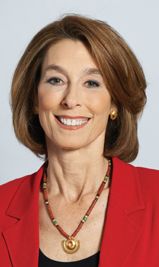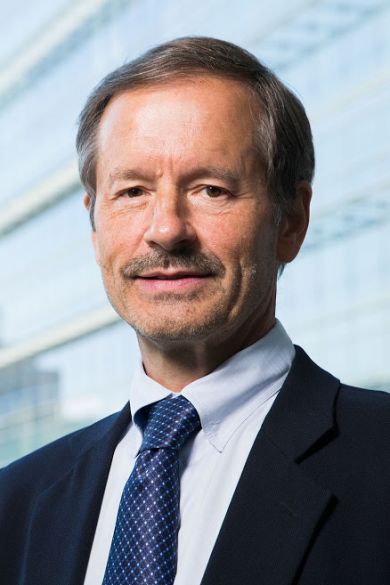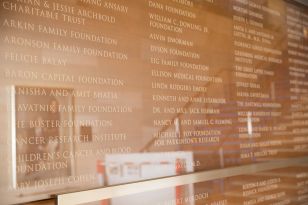New York City: En Route to a Bio Cluster
This is an excerpt of an article that appeared in xconomy.com. Read the full piece here.
Marc Tessier-Lavigne was the first Rockefeller University president to come from industry when he left a top job at Genentech in 2011 to move on to Manhattan’s East Side. In his five years running Rockefeller, Tessier-Lavigne was a staunch advocate of New York City’s life sciences scene, believing in its potential to rise as the next biotech hub complementing Boston and the San Francisco Bay area. “I have a slogan: by 2020 we want to be what Boston was in 2000, which is when Boston’s biotech ecosystem started to take off in a big way,” he says.
Tessier-Lavigne will see this transition happen from the other side of the country as he recently accepted an offer to head back to the West Coast and run Stanford University. No matter the distance, it’s clear that New York City is a unique beast in this world, especially when it comes to biotech. The challenges that the city needs to overcome to make its mark in biotech are well documented. C. Simone Fishburn comprehensively listed the city’s pros and cons in her article “New York’s biotech beginnings,” published in 2014 in Biocentury: scarce lab space, fewer venture investments in early-stage biotech companies and an apparent limited pool of experienced talent despite large, successful local biotechs like Celgene and Regeneron Pharmaceuticals.
In spite of these challenges, there seems to be something striking, effervescent, and energetic about New York City. What unicity characterizes the blueprint that the city has to offer as a differentiating platform for biotech value creation? In a Marxist political economy, productive forces refer to the union of labor power to means of labor. Applied to biotech, these include scientific knowledge and talent for the former, lab space and enabling financial capital for the latter. The streets of New York City are filled with the hustle and bustle of diverse productive forces, which could sprout into a differentiated biotech hub.
Productive forces in New York City express their diversity in three ways: diverse innovation, diverse sources of private capital, and diverse types of entrepreneurs.
- A crossroads of innovation: Not only does the city produce excellent biotech research, but it is finding new ways to trickle it down into the clinic and cross-fertilize adjacent industries.
- A symphony of private funding: Private capital sources are manifold with money being pooled out of philanthropy, industry and, although still in small amounts, traditional venture capital.
- Different entrepreneurs for different models: New York City is maturing a cohort of biotech entrepreneurs with different profiles and operating models.
A crossroads of innovation
New York City’s biotech innovation is showcased in the breadth and depth of the therapeutic and diagnostic areas it covers. The area is harvesting this innovation downstream by finding creative ways to tear down silos across academic institutions and medical centers, as well as across disciplines and industries.
New York City has one of the highest concentrations of academic and medical centers in the world. The city ranks second among all U.S. cities in National Institutes of Health funding behind Boston-Cambridge’s lead (see table below).
New York City is strong in neurosciences and thrives in oncology, thanks to the largest cancer care facilities in the world. The city also has a significant presence in research into many other disease areas: inflammation, metabolic, cardiovascular, infectious, and orphan diseases.
In neurosciences and related mental health diseases, New York has consistently received 10 to 15 percent more NIH funding than Massachusetts over the past four years (see Figure 1).
“New York City’s edge in oncology is indisputable,” says Thong Le, the CEO of Seattle-based Accelerator, a biotech startup creator that now has a foothold in the city. According to Le, Accelerator will be launching several companies this year. Petra Pharma, the first of them, has an oncology focus and Weill Cornell Medical College cell biologist and biochemist Lewis Cantley—who in the past discovered a key enzyme and its related biological pathway at the roots of a number of cancer drugs—as one of its scientific co-founders. Versant Ventures recently made one of its first deals on oncology work coming out of Brent Stockwell’s lab at Columbia University, forming Kyras Therapeutics.
Besides therapeutics, New York City is also active in diagnostics and personalized medicine. The city, for instance, already has a wide range of ongoing initiatives to help with the Precision Medicine Initiative President Obama launched early 2015.
To name a few, the Institute for Precision Medicine at Weill Cornell has recently introduced a sequencing test, EXaCT-1, for advanced-stage cancer patients. Last fall, the New York Genome Center collected $13.5 million from the National Heart, Lung and Blood Institute as part of the Trans-Omics for Precision Medicine program. Since this past summer, Columbia has started a large scale study into the genomic signatures of amyotrophic lateral sclerosis with a $33.5 million funding pool from Biogen (90 percent) and the ALS Association (10 percent).
The ability to forge interdisciplinary and inter-institutional collaborations may also represent a strong competitive advantage for New York institutions. The city has been at the forefront of breaking silos across universities, different fields of science, and between bench and bedside.
For example, an intimate collaboration focused on developing novel therapeutics has arisen between Memorial Sloan Kettering Cancer Center, Rockefeller, and Weill Cornell through the Tri-Institutional Therapeutics Discovery Institute (Tri-I TDI). This institute is a partnership established with Takeda, and provides faculty at the three institutions with the expertise and manpower in medicinal chemistry to more efficiently and effectively move new discoveries toward the clinic. Takeda has stationed 15 medicinal chemists in the Tri-I TDI’s wet lab facility located on the campus of Weill Cornell.
Upon taking office as the Dean of Weill Cornell in 2012, Laurie Glimcher insisted on bridging bench to bedside through the Weill-Cornell institutes: the Institute for Precision Medicine, the Brain Mind Research Institute, the Meyer Cancer Center, and the Roberts Institute for Inflammatory Bowel Disease and Inflammation. These institutes unite principal investigators from academic “basic” research labs with clinicians at the medical center.
Walls are also falling across graduate schools at Columbia in biomedical engineering. “The number of inventions at the intersection of biology and engineering has significantly increased at Columbia over the past couple of years,” says Orin Herskowitz, executive director of Columbia Technology Ventures, the university’s tech transfer office.
The Zuckerman Institute is yet another step in furthering collaborations across diverse scientific worlds of research. Set to open on Columbia’s campus in Manhattan this year, the institute is intended to be both a hub for neuroscience research and a place where cross-disciplinary collaborations can take place between Columbia neuroscientists, engineers, artists, poets, architects, and others.
Outside academia, New York City is ideally positioned to play a unique interdisciplinary role in combining advances in biology with other industries. Take Modern Meadow, a biofabrication company that started out in California and Missouri intends to sell materials. “We decided to move over to New York City from the West Coast to be closer to our various partners: consumer brands, designers and of course academic research institutions,” explains its founder and CEO, Andras Forgacs. Similarly, PhD Skincare, which develops innovative sunscreen products, relocated from Los Angeles to New York City. “We needed the proximity to the cosmetic industry mostly based in New Jersey and Manhattan,” says its founder and CEO Steven Isaacman.
A symphony of private funding
NIH grants aside, New York City has a mix of available private funding sources, from philanthropy—where the city leads in the whole country—to industry alliances and venture capital.
New York City ranks number one in philanthropic donations made to academic and medical centers accumulated from 2011 to 2015, with over $2.68 million (Figure 2, Philanthropic donations to academic and medical centers of major cities in New York, Massachusetts and California from 2011 to 2015). Boston comes second with over $2.18 million accumulated over the same period.
Cantley moved from Boston to New York City in 2012 to lead the Sandra and Edward Meyer Cancer Center at Weill Cornell and New York-Presbyterian Hospital. “Philanthropy accounted only for 5 percent of my funding while in Boston. Here, it has grown to two thirds of it,” he says. It takes two to three years to obtain a research grant from the NIH; the process is much shorter with philanthropic money. According to Cantley, in times when it is harder to obtain NIH funding, philanthropic money reinforces New York City’s competitive advantage in producing differentiated academic science. As such, philanthropy can guarantee continuity for long term biomedical research progress and foster burgeoning careers for young scientists.
Over the past three years, a fraction of this philanthropic money has been pooled into accelerator funds set up in-house by local academic and medical centers. These funds, which advance technologies that are not yet mature enough for a licensing deal or venture investment are: the Robertson Therapeutic Development Fund ($25 million) at Rockefeller; the Accelerator Fund ($6 million) at Memorial Sloan Kettering Cancer Center; the Deadalus Fund for Innovation (single digit millions of dollars) at Weill Cornell; the Columbia-Coulter Translational Research Partnership ($5 million), and NYU Langone’s Translational Science Incubator.
Beyond philanthropic fundraising, New York City researchers can leverage their proximity to the Big Pharma companies in New York and New Jersey to attract industrial partners. In Glimcher’s own words, these “marriages made in heaven” bring the best of what industry and academia can provide for one another. Ever since Glimcher recruited Larry Schlossman to Weill Cornell two years ago to spearhead alliances and collaborations with Big Pharma, a couple of dozens of such “marriages” have been arranged. Schlossman adds the industry partner typically commits a minimum of several million dollars in research funding per alliance, which are designed to last at least three years.
Venture capital is finally starting to pour into the city too. “Compared to Boston that is becoming a little fished out, New York is a virgin territory full of hidden gems,” Schlossman says. Accelerator and Versant have each established a presence in New York City in the summer 2014 for the former, and summer 2015 for the latter. They both focus on strong academic clusters that are underserved in terms of venture capital investments: the Big Apple definitely fits the bill.
Arch Venture Partners, Flagship Ventures, and a consortium composed of Celgene, Eli Lilly, and GE Ventures led by the New York City Economic Development Corp. (NYCEDC) have dedicated $150 million to a life sciences funding partnership. Like Versant and Accelerator, Arch and Flagship will establish presence in New York City. Last summer, Deerfield Management launched a $550 million healthcare venture-capital fund.
Arch partner Tom Brennan says that the firm is putting a full-time employee on the ground in New York City over the next three years, intending to “develop meaningful relationships and create value for principal investigators from the nine New York City academic institutions.” Likewise, Flagship has already appointed a new recruit, Jason Park, to a full-time post in New York City.
Brennan believes that a double-digit number of companies could be started based on the nascent technologies he’s reviewed since last March. He says, however, that these technologies are not ready to attract traditional venture capital yet. They are still too early-stage, sometimes with an unclear market opportunity or exit strategy.
This diagnosis is shared by Carlo Rizzuto, partner at Versant. Versant has put together a “translational research funding” mechanism through its early-stage incubator, Highline Therapeutics. “Highline is a Versant-owned discovery engine funded by both Versant and pharma partners,” Rizzuto explains.
....
Looking ahead
Standing on its diverse productive forces, New York City can leverage its powerful assets in innovation, private capital, and entrepreneurs. New York City is constantly moving at a fast pace. Tessier-Lavigne says that Boston’s exciting growth in biotech makes it harder for nascent and developing biotech companies to find affordable space and grow. Conversely, Tessier-Lavigne believes that New York City’s life sciences scene will soon reach a point of critical mass that should make growth more sustainable.
Weill Cornell’s Glimcher has shown how mobile talent can be in attracting over 50 principal investigators from across the country to the school over the past four years. Glimcher still admits that it is difficult to recruit younger scientists with families, however, due to the cost of living and the uneven quality of public schools in Manhattan proper—in the surrounding boroughs and suburbs, there are many high quality schools, Tessier-Lavigne adds.
New York City will have some work to do in the years to come. Tessier-Lavigne and Glimcher have both chosen to leave New York. The former returns to the Bay area, and the latter to Boston, creating a temporary leadership void. The mindset they instilled of tightening bonds between academia, entrepreneurs, and industry should continue through the people they hired, the processes they designed, and the philosophy of tearing down silos that they practiced. New leaders of equivalent stature to drive the New York City cluster at this exciting, still fragile time, will of course be necessary to keep the push for excellence in the long run.
....





